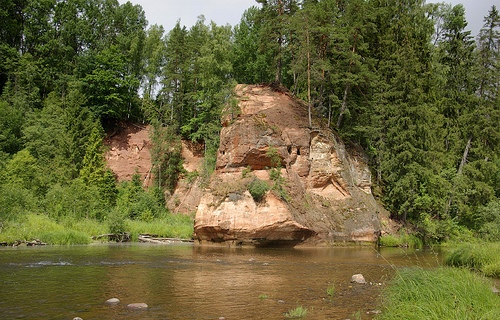

Location: Cēsis Map
Area: 917 km² (92000 ha)
Gauja National Park is a natural reserve in Cēsis
region in Latvia. This nature reserve derives its name from a valley
of a Gauja river. Covering an area of 917 km² it is largest and
oldest national park in the country found in September of 1973. The
banks of the river are largely made up from sandstone cliffs that
were formed during Devonian period. In some areas they reach a
height of 90 meters. Despite temptation to jump from these
geological formations it is not advisable to carry out this practice
due to low water level in some places. Nicknamed a "Livonian
Switzerland" it attracts thousands of tourists every year. Some of
the caves in the sandstone cliffs preserve graffiti of hikers who
visited these places in the 19th century. Most of the land area of
the Gauja National Park are covered by pine and spruce forests as
well as 900 other plant species. Additionally there are 48 species
of mammals and 149 species of birds. Reserve has several lakes
within its borders, but its largest lake is a Lake Ungurs.
One of the most notable sights in the ancient valleys of Gauja
National Park is a medieval Āraišu Lake Castle as well as Soviet
secret underground bunker of Ligatne that was constructed to protect
population in case of a nuclear war between Soviet Union and United
States.
Hiking in the park
Walking through the entire
park from Valmiera to Sigulda is 90 kilometers along the Gaujajoki
(Koivajoki), but by changing the starting place, the distance can be
shortened or extended. The flow of the Gauja River is quite fast for
the paddler, but it does not have difficult rapids. Due to its
rapids, the Gaata tributary Amata is clearly more demanding for
paddlers, especially during the spring floods. There are canoe
rentals, campfire sites and campsites for hikers.
The park
also offers cycling. The body of the route is the part of the LatEst
bicycle route from Valmiera via Cēsis to Sigulda. The entire route
extends all the way to Southern Estonia, and there are many cultural
sites and accommodation along it.